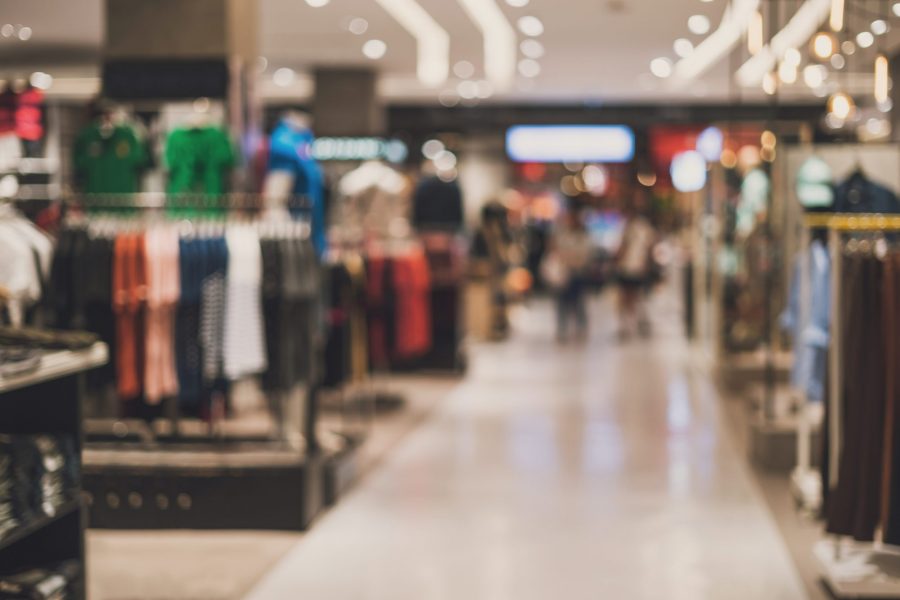
Retail
What are BOPIS and BOPIL?
Written by: Parcel Pending
8 Min Read
Published: February 27, 2019
Updated: December 13, 2022
You may have noticed that many other retailers are offering a new shopping option: Buy Online, Pick-up In Store (BOPIS) and click and collect lockers uk. This in-store pick-up option has quickly gained traction, as it is a convenience-focused service that customers are attracted to. There are many reasons, aside from customer convenience, why retailers are and should be expanding their in-store pick-up options. Not only does in-store pick-up drive increased traffic to brick-and-mortar locations that have been struggling for years to boost sales, but it also helps remove the boundaries between a retailer’s online and physical presence.
Below, we’ll take a close look at BOPIS and BOPIL and how they are shaping the future of retail shopping, and enabling retailers to address the challenges that have accompanied the rollout of in-store pick-up.
What is BOPIS?
If you aren’t familiar with what BOPIS is, getting a basic understanding of the service is a useful place to start. So, what is BOPIS in retail? The concept behind BOPIS is simple. When a customer is shopping online at a retailer that has brick-and-mortar locations, customers can choose an option for the item to be picked up in-store, rather than shipped to their home.
Not all retailers are the same, so not all BOPIS services are exactly the same. That being said, there are some features that are broadly similar across most, if not all, of the retailers offering in-store pickup. One feature is that BOPIS tends to be faster than normal shipping methods. Retailers that maintain a physical presence have struggled for years to keep up with the free, expedited shipping options that online retailers have been able to offer their customers for years.
One of the reasons this has been challenging is that retailers with a physical presence have a greater level of overhead that they must account for. BOPIS has helped retailers capitalise on consumer desire for near-instant gratification – something that online retail giants are catering to with same-day shipping options.
The second benefit of in-store pick-up is that it’s inherently designed to create a frictionless shopping experience. When an individual buys a product online and selects store pick-up, if the item is on the shelves a store associate goes out and pulls it, doing the same with other items until the entire order is assembled. If none of the items are on the shelves at the store they will be shipped from other nearby stores or distribution centers. Once this process has been completed, the customer will usually get a notification that their order is ready for pick-up.
In some cases, the customer must go to the customer service area to retrieve their order. Other retailers offer curbside pick-up where a store associate brings the order out to the customer. Increasingly, retailers are looking to streamline the BOPIS process even further, which is where electronic parcel BOPIS lockers come in.
What is BOPIL?
Now that we have an understanding of the basics of picking up online purchases in-store, let’s take a look at how the use of parcel lockers in retail locations is intersecting with this trend. The use of parcel lockers for package pickups has been steadily increasing in recent years, particularly in urban locations. Online retailers have begun turning to parcel lockers in recent years as a means of streamlining the package delivery process and addressing security concerns associated with package delivery at residential addresses. In addition to offering enhanced package security for customers, one reason online retailers have been increasingly utilizing electronic parcel lockers is that it saves money on last-mile delivery.
Retail lockers function in a similar way. When a shopper finds the items they want online, they can complete their purchase and choose an in-store pick-up option. Once the item is ready, they will get a notification. With parcel lockers, this notification can be sent out automatically once the package has been placed in the parcel locker. The customer can then visit the on-site location, retrieve their package from the locker, and either continue shopping or exit the store.
BOPIS retail lockers address many of the deficiencies that exist with current iterations of BOPIS services. To understand what we mean, it’s first helpful to explain the basic advantages and disadvantages of BOPIS as it currently stands. This provides a useful framework for understanding how electronic parcel lockers enhance in-store pickup offerings for both the customer and the retailer.
Advantages and disadvantages of BOPIS
Like everything, there are advantages and disadvantages to the way many retailers are currently implementing in-store pick-up. We’ll outline the pros and cons of BOPIS from both the customer and the retailer’s perspective.
Advantages
The core advantage that BOPIS offers is convenience. Most BOPIS services allow brick-and-mortar retailers to offer their customers near instant-gratification shopping with the convenience that already exists in an online shopping experience. Customers can, for the most part, complete their purchase online and pick up their items in-store without having to deal with the hassles associated with retail shopping, such as browsing for the items they want and completing the standard checkout process.
BOPIS orders offer the best of both worlds for customers; the convenience and efficiency of being able to shop and order online from anywhere, with faster shipping options, while providing the flexibility to control exactly when a customer receives their order.
For retailers, BOPIS has significant advantages. First, it has allowed brick-and-mortar retailers to stay competitive with e-tailers by having a shipping option that can compete with the free, expedited shipping that online retailers offer. In many cases, orders that are completed online and picked up in the store can be retrieved even faster than the same-day shipping options that e-commerce retailers are rolling out in select urban markets. This allows retailers to attract shoppers that like both the convenience that online shopping offers and the instant gratification that retail shopping provides.
Retailers have been quick to adopt BOPIS in part because it helps reduce costs associated with last-mile logistics. Rather than an individual shipment going out to different residential addresses, retailers can consolidate deliveries by having the customer come retrieve the item from in-store. They are able to offer this service free of cost because it actually saves them money on shipping.
BOPIS has also changed the way that many retailers are fulfilling orders. Prior to in-store pick-up options, retailers had separate fulfillment for orders that were placed online or in a store. For online purchases, retailers drew from inventory housed in distribution centers. If an item was out of stock, it was actually out of stock in a distribution center but not necessarily out of stock in stores. Now, when you shop at a retailer that offers in-store pick-up, items that are physically on the shelves are counted in that inventory. This is advantageous for shoppers that are picking up in-store or having it shipped directly to them because now, retailers are using their stores to fulfill orders that are completed online and intended to be shipped out.
So, when you complete a purchase at a retailer that has an online and retail component, your shipment may come from either a distribution center or retail location. This is advantageous to retailers because it allows them to provide customers with a more accurate picture of their inventory while leveraging the staff and inventory at retail locations to drive increased online purchases.
Disadvantages
Given all of the positive benefits associated with in-store pick-up, you might wonder what disadvantages exist. Most of the disadvantages come down to poor implementation. One of the primary reasons most people choose to utilize in-store pick-up is because of the enhanced convenience it provides. However, once a customer arrives at the store, they usually have to wait in line at the customer service desk to retrieve their package. This can take time, as most customer service desks are also where returns and exchanges are made, resulting in long wait times. This can quickly lead to frustration for customers that are on a time crunch.
The second disadvantage of BOPIS is that it can be incredibly labor-intensive for staff. In order for BOPIS to be efficient, retailers will usually assign one or more staff members to retrieve the individual items for an order, assemble the order, and notify the customer that their order is ready. This takes time away from other tasks that the store associate could be completing. Of course, there is no way to eliminate the labor component associated with BOPIS, at least not without significant automation. What this means is that a labor component will always be required if retailers want to keep offering this service. However, the key is finding ways to improve the efficiency of that labor. That is where electronic parcel lockers come in.
How parcel lockers improve BOPIS
By now we have a firm understanding of what BOPIS is, how it works, and what the advantages and disadvantages are. Ultimately, BOPIS represents an exciting channel through which retailers can capture increased sales. However, there are some ways that the process can be improved. One of these is through the use of electronic parcel lockers. As we have outlined, BOPIL is broadly very similar to BOPIS. However, there are some key differences in the execution of these two services.
One advantage of BOPIL is that it capitalizes on the appeal of a frictionless shopping experience that BOPIS promises but underdelivers. Most customers that choose in-store pick-up would prefer not to have to wait in line to retrieve their order. By using a locker, retailers can eliminate lines for online order pick-up. Instead, the customer goes to the locker and seamlessly retrieves their package, without ever having to interact with a sales associate if they don’t want to.
A second advantage to using retail lockers for in-store pickups is that they improve the efficiency of the process for the store associates themselves. With an electronic parcel system, the time-consuming steps associated with preparing BOPIS orders are automated. Store associates can retrieve the item off of their shelves, log it into the locker system with the associated order number, and then move on to the next order. At this point, their role in the process is done. Once the parcel is entered into the locker system, a notification is automatically sent to the customer letting them know their store order is ready for pick-up. Once the customers enter the store to pick up their item they can do so without the assistance of a store associate.
Conclusion
In the end, BOPIL services aren’t meant to replace BOPIS, but rather augment it. The buy online, pick-up in-store option isn’t going anywhere any time soon. The use of a retail locker enhances the in-store pick-up process by making it more streamlined and frictionless. The result is a convenient, modern, and automated experience that will keep your customers coming back.
Quadient and you
If you’re interested in learning more about how a Quadient Parcel Locker can improve your BOPIS experience, contact us today.



